NYC Says Goodbye the MetroCard
The MTA will stop selling its iconic yellow metro cards at the end of 2025!


Described by residents as its “own small town within the city,” Park Slope is a lively Brooklyn neighborhood filled with historic buildings, top-rated restaurants, and outdoor green spaces. Before the arrival of European settlers, Park Slope’s land used to be inhabited by the Canarsee Indians, one of several Indigenous Lenape peoples who hunted and farmed what used to be known as South Brooklyn. The tribe’s legacy can still be seen in the neighborhood, since the modern-day Flatbush Avenue is a widened version of a Lenape road. European settlement would begin around 1637-1639, when William Kieft, director of the Dutch West India Company, purchased what is now almost all the land of Brooklyn and Queens. Park Slope’s land would mostly be used as woods and farmlands until the early 19th century.
After the completion of Prospect Park and the Brooklyn Bridge, mansions and rowhouses sprung up across the neighborhood, as wealthy landowners fled from the bustling Manhattan scene for the more peaceful nature of Park Slope. Though the neighborhood would face widespread social and infrastructural decline during the mid-20th century, gentrification of the area during the 1960s would renovate building stock, leading to the Park Slope we know today. Some key spots to visit today include the Brooklyn Academy of Music, the Brooklyn Botanic Gardens, the Brooklyn Museum, and the Central Library branch of the Brooklyn Public Library system. Keep reading for an inside peek into one of Brooklyn’s most illustrious neighborhoods.
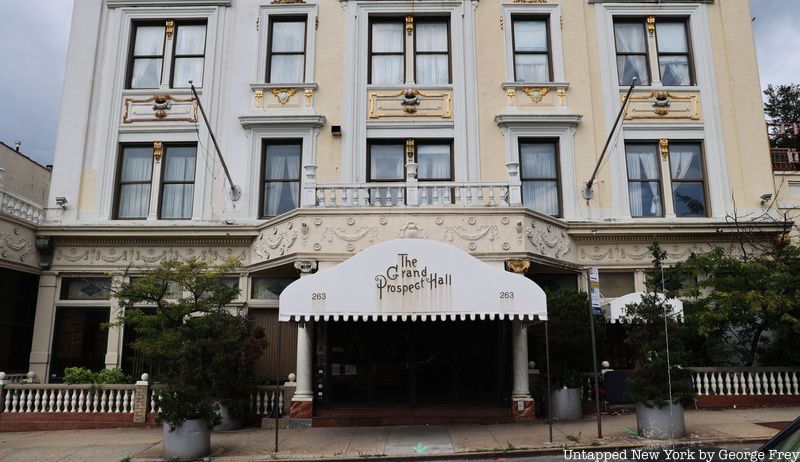
Before the construction of the Brooklyn Bridge, the area that would become Park Slope was home mainly to farmers and wealthy landowners. However, following its construction, the area became more directly connected to the city, allowing for goods to cheaply and easily pass back and forth. By the end of the 19th century, Park Slope was reported by the U.S. Census Bureau as having the residents with the highest per capita income in the nation. Ornate Victorian mansions began to spring up along Prospect Park West, with the area being monikered the “Gold Coast.”
While the Park Slope of today differs from its “Gold Coast” period, one striking remnant is the Grand Prospect Hall — the last authentic vaudeville theater in Brooklyn. Built by German immigrant John Kolle in 1892, the Hall was once where the neighborhood’s wealthiest residents attended shows, movies, parties and cultural events. Since its opening, it has served as the backdrop for films such as The “Royal Tenenbaums” and “Cotton Club.” Closed since the start of the pandemic, the Grand Prospect Hall was recently sold by Alice Halkias — the only remaining owner following her husband Michael’s death in May 2020. It was bought on July 16, 2021, by Angelo Rigas — an electrical engineer — for $30 million. However, it will be demolished in the coming months.
In the end, the exorbitant wealth of Park Slope’s “Gold Coast” period did not last forever. During the Great Depression, many of the area’s elite were forced to scale back their expenses, with many residents choosing to sell their properties and move out of the city. Those that bought the abandoned spaces often demolished and rebuilt them as tenement houses, attracting immigrants from Europe, African Americans from the South, and Hispanic migrants. With this, the area’s reputation changed, and it was regarded as a tough working-class neighborhood eroded by rising crime and poverty. Even so, the neighborhood quickly bounced back, with young professionals moving into the area during the late ’50s and early ’60s. Refurbishing the brownstones and row houses left behind by the area’s former wealthy residents, these professionals helped restore Park Slope as one of the city’s premier locations to live.
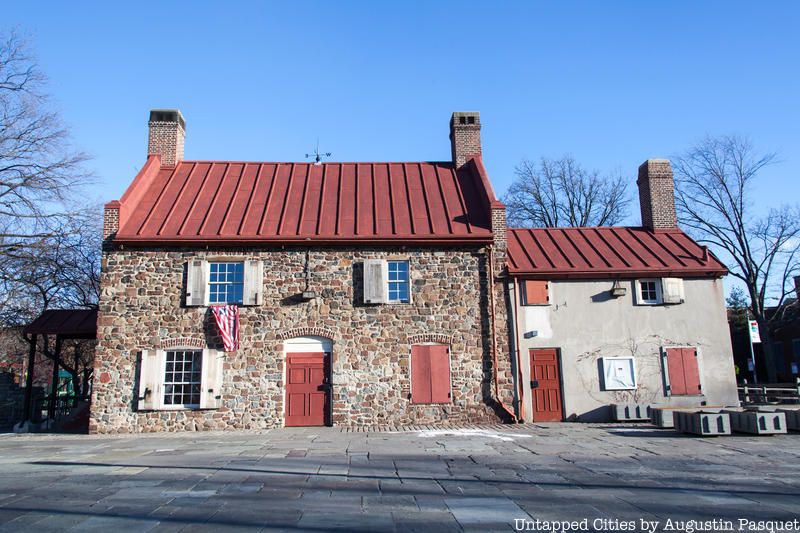
Since the late 17th century, the Old Stone House has played many important roles within the Park Slope community. Listed as part of the Historic House Trust of New York City and the National Register of Historic Places. the Old Stone House currently serves as the conservancy organization for Washington Park. The organization has overseen more than $9.5 million in park renovations and works to produce educational programming for 7,000 students. In addition, the Old Stone House serves as a space for over 200 individual artist and family events each year. Located within the J.J. Byrne Playground at Washington Park on Third Street between Fourth and Fifth Avenues, the Old Stone House of today is a 1993 reconstruction of the Vechte-Cortelyou House which was destroyed in 1897. The original Dutch colonial farmhouse was built in 1699 on land taken from the Lenape people as early as 1639 by Claes Arentsen Vechte, a wealthy carpenter, farmer, and wheelwright. Owning the surrounding lands, the Vechte family often harvested oysters in the Gowanus Canal, ferrying them for sale in Lower Manhattan.
In 1776, the house would serve as the culminating location in the Battle of Long Island (also known as the Battle of Brooklyn) — the first major military engagement after the signing of the Declaration of Independence and the largest battle of the American Revolution. On the morning of August 27th, as British troops approached the main American camp in Brooklyn Heights, American General William Alexander Lord Stirling realized the precarious predicament his army was in. To push the British back, Stirling led a regiment of 400 Maryland soldiers against 2,000 British troops under the command of General Charles Cornwallis stationed at the Old Stone House. Though two separate attempts were made, Stirling’s army surrendered in the end. With this loss, the British went on to occupy Brooklyn and Manhattan for the next seven years — though they failed to stop General George Washington and, which would be decisive in leading to the colonists’ ultimate victory. Today, the Old Stone House has been converted into an ongoing memorial to the Battle of Brooklyn.
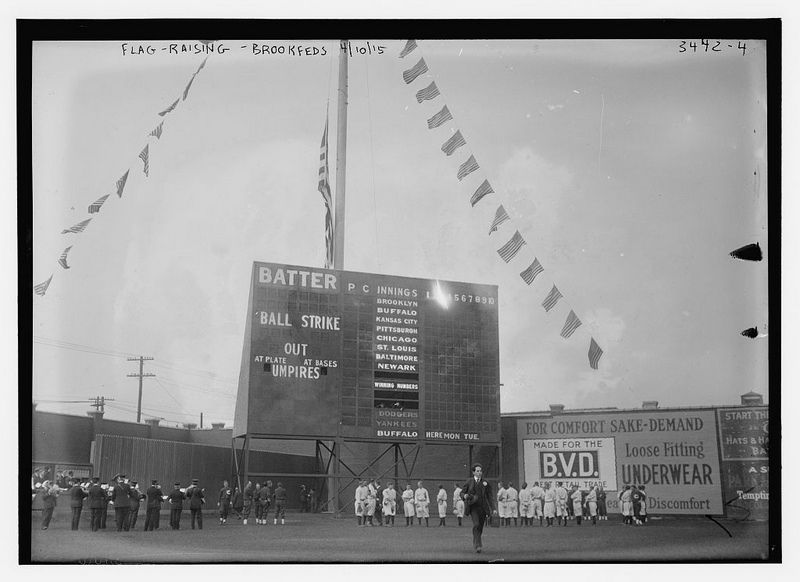
Over the years, the city’s baseball stadiums have come and gone. One such stadium is a series of ballparks known collectively as Washington Park. Consisting of three separate stadiums in the Park Slope and Gowanus neighborhoods between Third Street and Fourth Avenue, Washington Park was the home base of the Brooklyn Dodgers between 1898 and 1912.
The first park was used from 1883 to 1891, containing what is now the Old Stone House. The park also served as the birthplace of ice baseball — a unique combination of ice skating and baseball featuring only five innings and 10 players. The first ice baseball game took place on February 4th, 1861 between the Atlantics and Charter Oaks, drawing around 12,000 spectators. Beginning in 1892, the Dodgers would split their time between the first park and a newer facility called Eastern Park. This lasted until 1898, when the team moved fully into the second park due to poor attendance. While at the second park, owner Charles Ebbets began developing Ebbets Field in Flatbush, which would become the Dodgers’ future stadium in 1913. Following its purchase by the Brooklyn Tip-Tops after the Dodgers’ relocation, Washington Park would be rebuilt with steel and concrete. The Tip-Tops were short-lived, disbanding one year later and leaving the park to be demolished in 1926. Today, the property is owned by Con Edison.
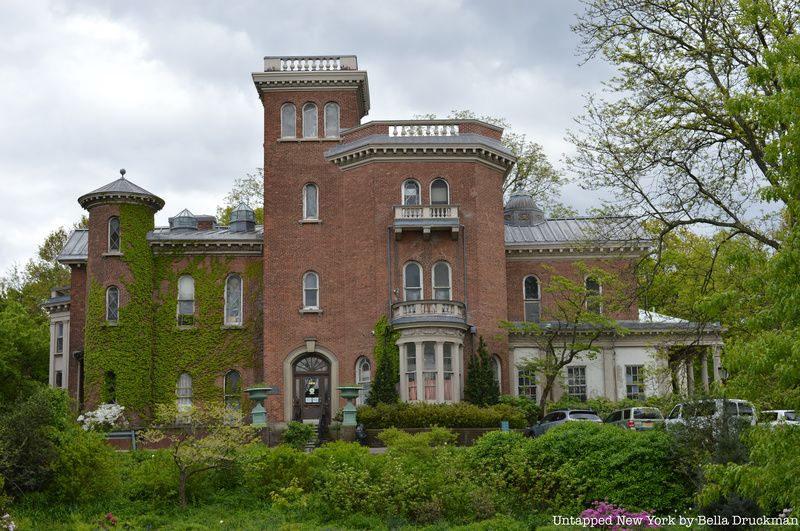
Nestled between the trees of Prospect Park, Litchfield Villa is a sight to behold. Commissioned by railroad and real estate developer Edwin C. Litchfield in 1855, the Italianate-style villa cost $150,000. It was completed two years later in 1857 by Architect Alexander Jackson Davis — known for having also constructed Lyndhurst Manor, Federal Hall, and the Hudson Valley mansion Locust Grove. Over the years, the villa has undergone many changes, with the original coach horse, greenhouse, and chicken house that once surrounded it no longer exists. The villa was named a New York City landmark on March 15, 1966. Today, visitors can marvel at the villa’s ivy-covered walls, corn and wheat-adorned columns, and the Rococo-style decorated Gold Room.
Located on Prospect Park West and 5th Street, Litchfield Villa predates the construction of Prospect Park, which was completed in 1867. As a result, original plans for the park were made to work around the villa, giving it its current majestic forest backdrop. In 1869, the Litchfield family ceded the 50 acres of land used for Litchfield Villa to the City of Brooklyn, which bought the plot for $1.7 million. However, the city allowed for the family to lease the property — and Litchfield, his wife Grace Hill Hubbard (who inspired the villa’s nickname “Grace Hill”), and their five children continued to live in the mansion. Eventually, so heartbroken following the death of Grace in 1881, Litchfield would leave the villa, releasing it solely into the hands of the Brooklyn Parks Commission — which began using the space as its headquarters in 1883.
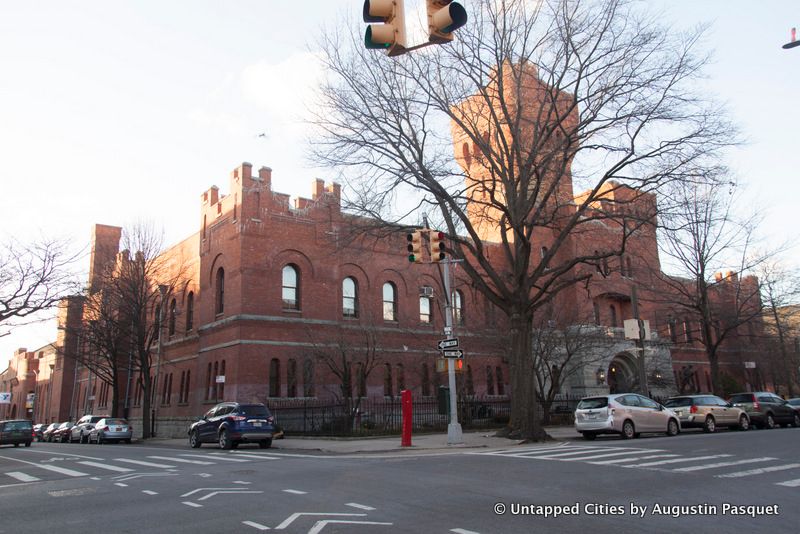
Built between 1891 and 1895, the 14th Regiment Armory (now known as the Park Slope Armory) is located on Eighth Avenue between 14th and 15th Streets. Designed by William A. Mundell, the armory’s towering brick and stone castle like-structure was inspired by medieval European military structures. Originally, the armory was made to house the 14th Regiment of the New York State Militia, which was the United States’ most active state militia at the end of the 19th century. The armory remained in use by the 14th Regiment until 1992 when New York State’s Division of Military and Naval Affairs removed most of the military presence. A year later, the National Guard unit at the armory was fully relocated, but funding allocated by governor George Pataki kept the armory from closing.
Besides acting as a military base, the Park Slope Armory has also served as a crucial community-oriented organization. In March 1986, part of the armory became a 70-bed women’s homeless shelter, which remains in operation. In addition, it also houses a veterans’ museum and a YMCA-operated sports complex that opened in 2010. Visitors to Park Slope Armory today can still view many of its original features, including an abandoned shooting gallery and a stone from the Battle of Gettysburg.
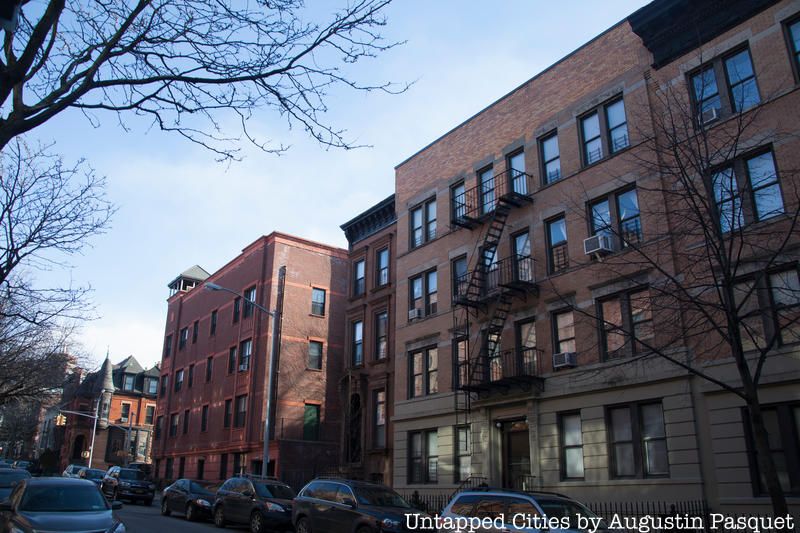
On December 16, 1960 — one day before the 57th Anniversary of the Wright Brothers’ first flight — a deadly mid-flight plane crash sent shockwaves throughout the Park Slope community. As eyewitness and radar reports suggest, two planes — a United Airlines DC-8 bound for Idlewild Airport and a TWA Super Constellation descending into LaGuardia Airport — collided in midair over Staten Island. Following the collision, the TWA plane crashed into Miller Field on the southeastern coast of Staten Island, where New Dorp High School now stands. However, the DC-8 took a different path, crashing in Park Slope at Sterling Place near the intersection of 7th Avenue. Wreaking havoc on the surrounding area, 10 brownstones, a funeral home, a deli and a laundromat were all set aflame. The Pillar of Fire church was also completely destroyed. As the deadliest aviation disaster in the world at the time, the crash killed all 128 passengers aboard both planes, as well as six people on the ground. Miraculously, 11-year-old Stephen Lambert Balt from Illinois briefly survived the crash after being thrown out of the plane onto a snowbank. Unfortunately, he passed from pneumonia the following day.
Remnants of the carnage can still be found scattered across the neighborhood. At 126 Sterling Place, the different brickwork across its top portion and missing black cornice highlight the building’s remodel following the crash. In addition to patched brick columns at 123 Sterling Place, the most striking vestiges of the crash lay in the backyard of sculptor Steve Keltner, taken from the church before it was cleared out. Keltner has two large metal pieces from the plane, one of which appears to have come from the gasket of the plane labeled “No. 5 main tank Auxiliary Fuel. Structural limit 17,605 lbs.” While there is no official plaque for the plane crash at Sterling Place, the historic event has been commemorated elsewhere in Brooklyn. In 2010, the Green-Wood Cemetery erected a memorial to the victims of the plane crash in a lot purchased by United Airlines for burying the unidentified remains.
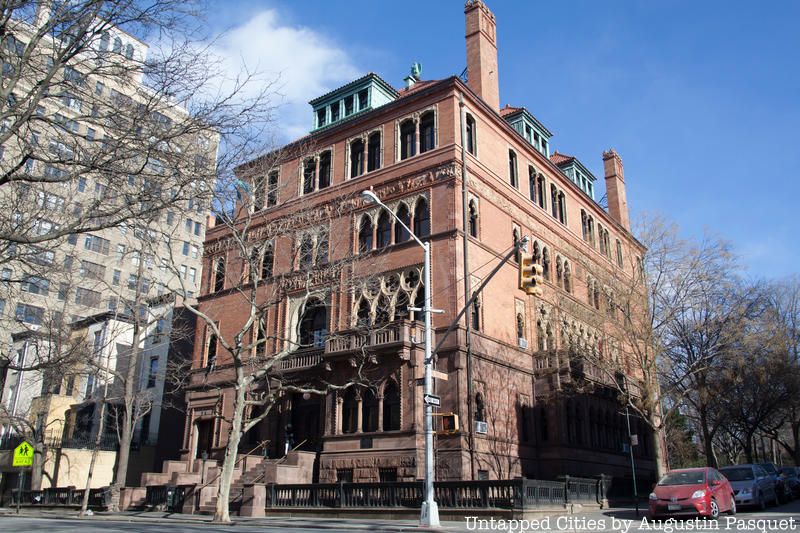
Situated on the corner of Eighth Avenue and Lincoln Place off Grand Army Plaza, the Montauk Club is a vibrant private social club that has been an integral part of the Park Slope community. Members of the club frequently organize a series of exclusive events including talks by local artists, live jazz performances, dinner operas, and monthly book, beer and wine clubs. Over the years, the club has been the set for television shows like “Billions,” “Boardwalk Empire,” and “The Knicks.” Moreover, many notable people have graced its halls including John F. Kennedy, Dwight D. Eisenhower, Grover Cleveland, and William McKinley — all of whom gave speeches.
The Montauk Club’s current Park Slope headquarters was designed by architect Frances H. Kimball — famous for his work on the Trinity and U.S. Realty Buildings on Broadway, the Corbin Building next to Fulton Center, and the Emmanuel Baptist Church in Clinton Hill, Brooklyn. Built in 1891 as a Venetian Gothic palazzo, its exterior was inspired by the Ca d’Oro or Palazzo Santa Sofia, located on the Grand Canal in Venice. However, the building also has many touches that harken back to the city’s former Indigenous inhabitants. Upon closer examination, references to the Montauk Indians can be seen on the club’s terra cotta faces and iron fencing around the building can be found displaying Native faces. In 1996, the Club’s basement, third, fourth, and attic stories were converted into condominiums, with residents entering through the original Ladies’ Entrance to the left of the main doors. Today, the Montauk Club retains usage of the parlor and second floor, with a breathtaking balcony overlooking the green canopy of Prospect Park.
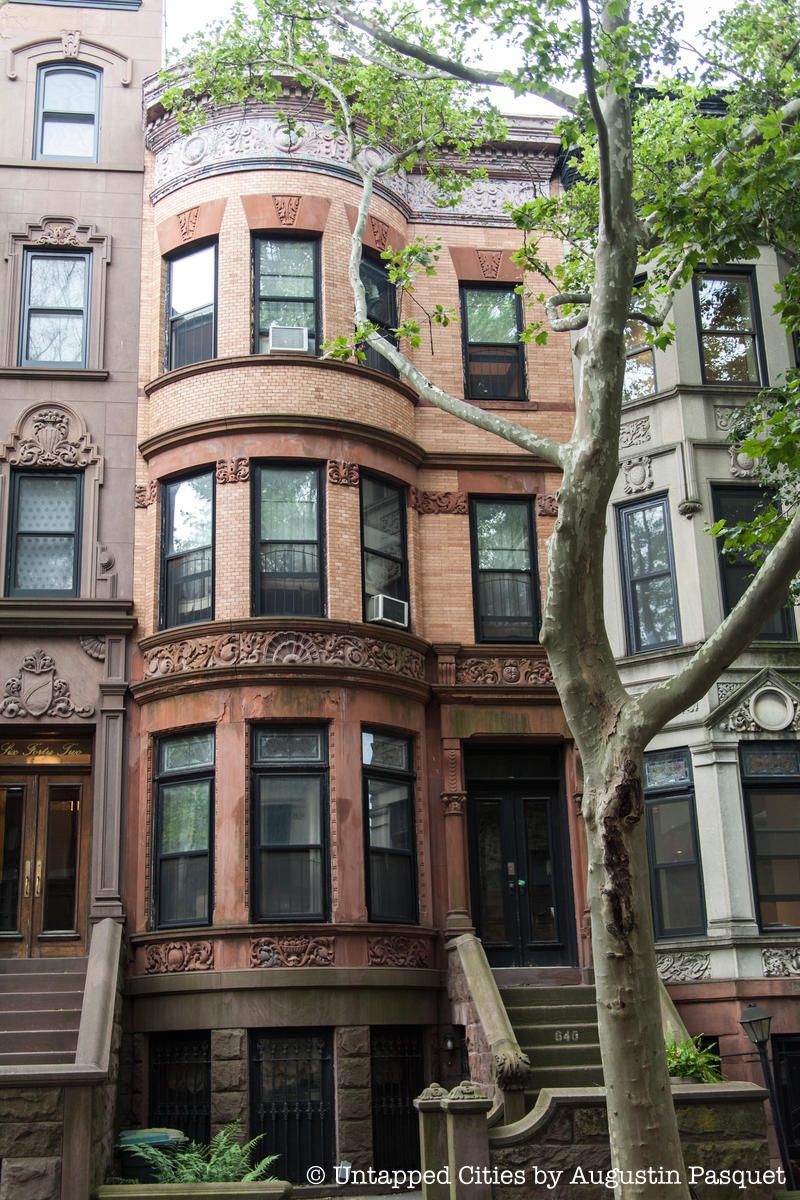
Before moving to Chicago — the city which would help launch his political career — former U.S. President Barack Obama resided in the heart of Park Slope. From December 1984 to March 1985, Obama lived in a townhouse located at 640 Second Street. Built sometime between 1901 and 1903, the townhouse is a classic three-story brownstone, beautifully adorned with bowed windows. After quitting his first job at the Business International Corporation in December 1984 following his graduation from Columbia University, Obama moved into the townhouse with his then Australian girlfriend Genevieve Cook — who was renting the top floor apartment from a colleague. Having met him at a Christmas party in the East Village in 1983, Cook spent her days teaching second and third graders at the Brooklyn Friends School. During his time living with Cook, Obama began working for the non-profit New York Public Interest Group, giving him his first taste of large-scale community organizing.
Though he meant to stay temporarily in the townhouse, he remained until Cook decided to move by herself to another apartment on Warren Street in March 1985 (with Obama renting his own separate place in Hell’s Kitchen). As explained by David Maraniss in his book Barack Obama: The Story, “Their time living together did not go well,” and the two would break up in May 1985. A few months later, Obama would move to Chicago, beginning a new job with the Developing Communities Project. In 1994, the townhouse would undergo major renovations and would be converted into a single-family residence. Some of what remains the same in the brownstone includes an original china cabinet, stained glass windows in the double parlor, carved wood wainscoting, and a little inglenook on the third floor. Popular as ever, the asking price for the historic home in 2017 was $4.295 million.
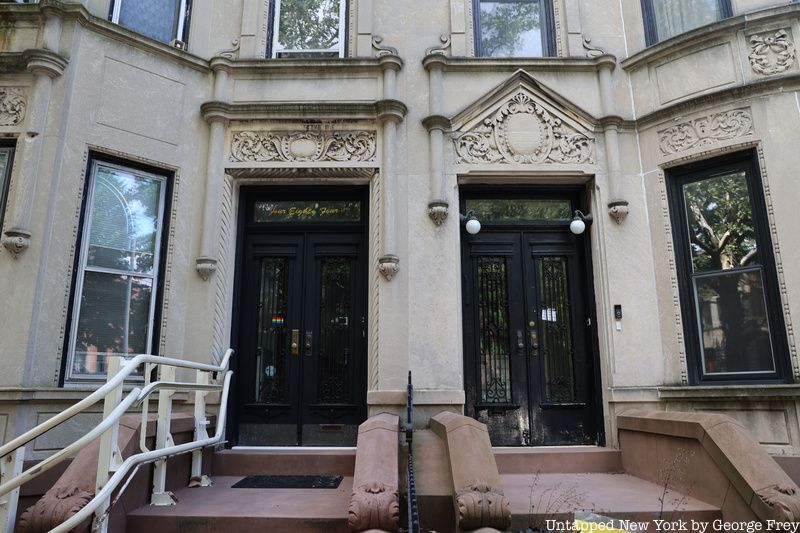
With a reputation as one of New York City’s friendliest neighborhoods for members of the LGBTQ+ community, Park Slope is home to establishments like the Lesbian Herstory Archives — home to the world’s largest collection of materials by and about Lesbians and their communities. Located at 484 14th Street, its roots can be traced back to 1972 when a group of mostly gay men and women and graduates of the City University of New York founded the Gay Academic Union. The Union aimed to represent the concerns of Lesbian and gay students, teachers, and workers. However, within a year, several of the participating women felt there needed to be a separate space to discuss sexism present within the organization, since Lesbian history was “disappearing as quickly as it was being made.” Two consciousness-raising groups formed, one of which became the founding site for the Lesbian Herstory Archives. With an emphasis on reframing Lesbian history — which had previously been largely viewed through a patriarchal lens — the Lesbian Herstory Archives centered its focus on studying topics ranging from Lesbian-Feminism to political Lesbianism.
A year later, the archives would publish their first free newsletter and move into Nestle’s Upper West Side apartment on 92nd Street. For the first 10 years of the organization, Edel and Nestle aimed to foster trust within the community by keeping all of the Archive’s services free, not seeking any government funding, and building grassroots support. They were able to accomplish this by spreading the word on their project in journal issues, photographs, and letters and holding a variety of venues in living rooms, synagogues, women’s festivals, and gay churches. During this time, other influential leaders in the gay liberation movement would join the Lesbian Herstory Archives, including grassroots Lesbian historian Judith Schwartz and New York-New Jersey activist Georgia Brooks, who hosted the organization’s first Black Lesbian studies group. In 1993, the Archives moved into their current Park Slope home, using the larger location to increase their outreach and grassroots community organizing efforts. Another LGBTQ+ establishment in Park Slope includes Ginger’s, one of the cities oldest Lesbian bars. In addition, the neighborhood was once home to the Transy House Collective, which sheltered trans and gender-nonconforming people from 1995 to 2008.
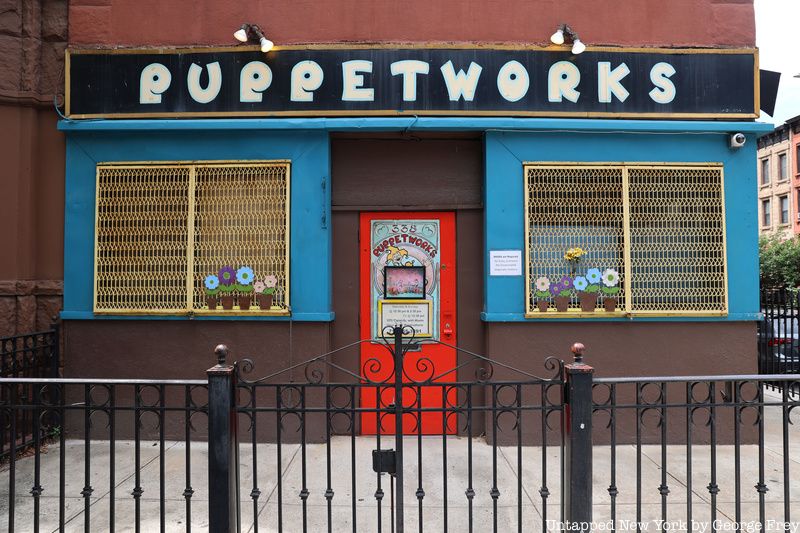
When Nicolas Coppola, Artistic Director of Puppetworks, first saw a performance by Suzari Marionettes as a third grader at Brooklyn’s P.S. 200, it was love at first sight. Coppola went on to become a professional puppeteer, hired by the same company that changed his world at the age of 19. During a brief stint away from the company while serving as a soldier at Fort Dix in New Jersey, Coppola perfected his skills, performing puppet routines for injured troops in Army hospitals. Eventually, he would return to Suzari, being promoted to Artistic Director on his 27th birthday in 1962, renaming it Nicolo Marionettes. The company would continue to produce puppet shows while touring the country, even having the opportunity to do a production of Mozart’s “The Magic Flute” at Washington D.C.’s Smithsonian Museum. Eventually, as the economy began to turn downward during the 1980s, Coppola founded the non-profit organization Puppetworks Inc. in 1991.
Since its creation, Puppetworks has operated out at 338 6th Avenue, with its red, yellow and blue exterior beckoning all passersby to head inside. Continuing with its colorful outside theme, Puppetworks’ interior contains Kermit-green walls and red-and-green benches. Much of the establishment’s clientele arrive on field trips and class visits. For his work, Coppola was given the 2011 President’s Award for “Outstanding Contribution to the Art of Puppetry” by the Puppeteers of America. Upcoming performances at Puppeteers include an adaptation of “The Three Little Pigs” on August 7th & 8th, “Rumpelstiltskin” from the Brothers Grimm from August 14th to October 31, and “Beauty and the Beast” from January 23rd to April 10th, 2022.
Next, check out The Top 10 Secrets Of Green-Wood Cemetery In NYC & The Lost Sport of Ice Baseball That Originated In Brooklyn!
Subscribe to our newsletter